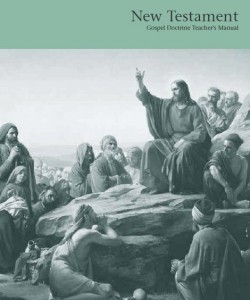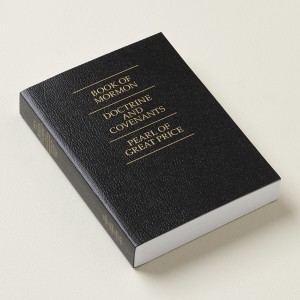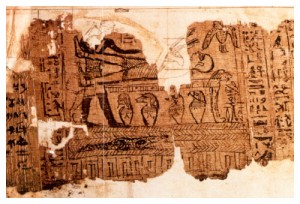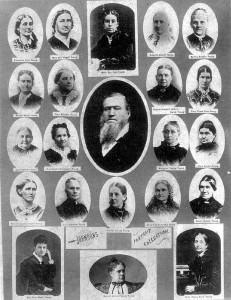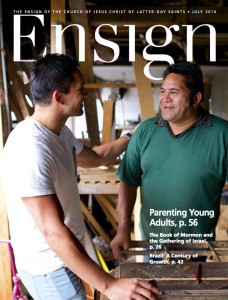 It’s only a short article located in the early pages of the July 2014 Ensign magazine, which is the official monthly organ of the LDS Church. But I believe this piece, titled “We Teach by the Power of the Holy Ghost” and found under the unattributed column “What We Believe,” is consistent with what is taught at every general conference.
It’s only a short article located in the early pages of the July 2014 Ensign magazine, which is the official monthly organ of the LDS Church. But I believe this piece, titled “We Teach by the Power of the Holy Ghost” and found under the unattributed column “What We Believe,” is consistent with what is taught at every general conference.
Before I tell you what this article said, let me provide some background. In recent years, renegade LDS apologists have been claiming in a postmodern fashion that, through personal revelation, individuals can determine correct doctrine. A case in point is Michael R. Ash, who wrote a 2008 book titled Shaken Faith Syndrome: Strengthening One’s Testimony in the Face of Criticism and Doubt published by an LDS apologetics group. In an apparent attempt to ignore certain statements made by LDS teachers over the years, Ash explains how Mormonism does not have “infallible” leaders. In fact, he even says there are times they may teach false doctrine. In his mind, the responsibility to determine truth from error is relegated to individual Latter-day Saints.
On page 20, he writes, “If we obtain our own personal testimonies, and live so that we can receive personal communication from the Father and the confirming testimony from the Holy Spirit, we will not be led astray.” He continued on page 22, “Just because a prophet has the keys to the priesthood and the authority to receive revelations from God for the direction of the church, doesn’t mean that every word spoken by a prophet is infallible, inspired, or factually accurate.”
Then Ash writes the following paragraph in an attempt to explain how a Latter-day Saint can receive doctrine:
“What, then, is official doctrine and what is opinion? Official doctrine will be announced as revelation and the body of the Church will sustain it (D&C 26:2, 1-7:27-31). Likewise, we can know if leaders speak the will of God when we, ourselves, are ‘moved by the Holy Ghost’ (D&C 68:3-4). The onus is upon us to determine when they speak for the Lord. If we rely solely on the revelations of the prophets, without seeking our own personal confirming revelations, we tend to tacitly accept their revelations as infallible.”
On page 24, he adds, “There is more to being a member of Christ’s church than just marching in step. Our goal should be to receive our own revelations and to become united with Christ.”
Ash’s statements raise several important questions. First of all, how can a Mormon know that his personal revelation comes from the Holy Spirit? I’m guessing those who hold such a position would defer to the standard “burning in the bosom” mantra. Good feelings apparently rule the day. The only way to determine if these good feelings come from the Spirit appears to be a matter of opinion.
Second, doesn’t Ash’s view mean the individual Mormon who realizes the error of a General Authority’s message must be living a more righteous life than his/her leader? Imagine if this particular Mormon felt confident that the time is now right for plural marriage to be restored, regardless of the fact that no LDS leader has recently taught this. If this “faithful” Latter-day Saint decided to go ahead and marry two or more women, who is Ash to say that such a practice is wrong? To refute this person’s belief, Ash will be required to say that his fellow Latter-day Saint is wrong. In essence, every Latter-day Saint becomes his own prophet. The confusion such a possible scenario brings to this religion is immense.
Finally, isn’t the purpose of God providing latter-day prophets so that they will guide His people through these perilous times? If the leadership can’t be trusted, why are they needed in the first place? Ash’s view encourages Mormons to refute the teachings of general authorities by coming up with contradictory personal revelation.
Regardless of Ash’s personal opinion, I have never heard LDS leaders speak in such a way. I believe the July 2014 Ensign magazine is a nail in Ash’s doctrinal coffin. The heart of the article discusses “four principles for effective teaching,” including “love those you teach,” “teach by the Spirit,” and “invite diligent learning.” But the final principle is devastating to Ash’s positon. It reads:
“Teach the doctrine. Approved curriculum materials from the Church, such as scriptures, general conference talks, and manuals, contain doctrine—eternal truths from God.”
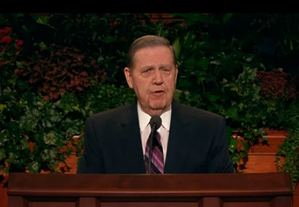 Let’s take a closer look at this sentence. The way to understand truth, according to the LDS Church’s own magazine, is using “approved curriculum materials.” What are those materials? This is, we’re told, the standard works, general conference talks, and official church manuals. Let’s suppose Ash’s view is correct. If so, here is the perfect opportunity for the LDS Church to state that “if any particular doctrine doesn’t suit your fancy and you have a valid testimony and live righteously, then counter this teaching and merely disregard what the leaders have said.” No such statement can be found. Does Mormonism allow the possibility for a Mormon to disregard any teaching just because the person may feel it’s not ordained by God? Ask Kate Kelly, who was recently excommunicated from the church because she honestly believed that God wants women to hold the priesthood.
Let’s take a closer look at this sentence. The way to understand truth, according to the LDS Church’s own magazine, is using “approved curriculum materials.” What are those materials? This is, we’re told, the standard works, general conference talks, and official church manuals. Let’s suppose Ash’s view is correct. If so, here is the perfect opportunity for the LDS Church to state that “if any particular doctrine doesn’t suit your fancy and you have a valid testimony and live righteously, then counter this teaching and merely disregard what the leaders have said.” No such statement can be found. Does Mormonism allow the possibility for a Mormon to disregard any teaching just because the person may feel it’s not ordained by God? Ask Kate Kelly, who was recently excommunicated from the church because she honestly believed that God wants women to hold the priesthood.
And finally, notice the definition of “doctrine”: “eternal truths from God.” Eternal? Listen carefully. Doctrine in Mormonism is not open for individual or peer review. When the Brethren speak, it’s a done deal.


